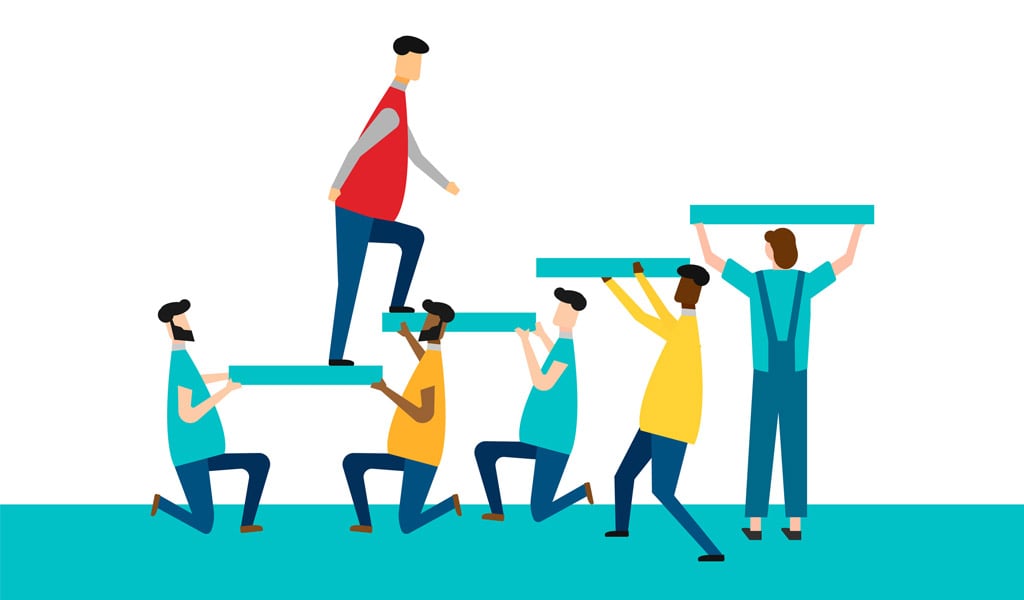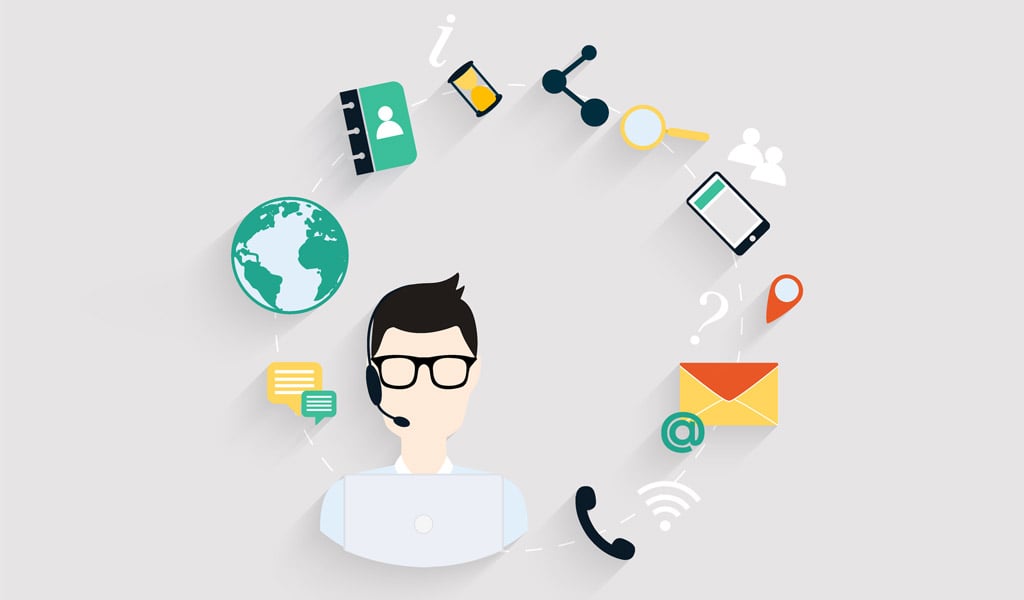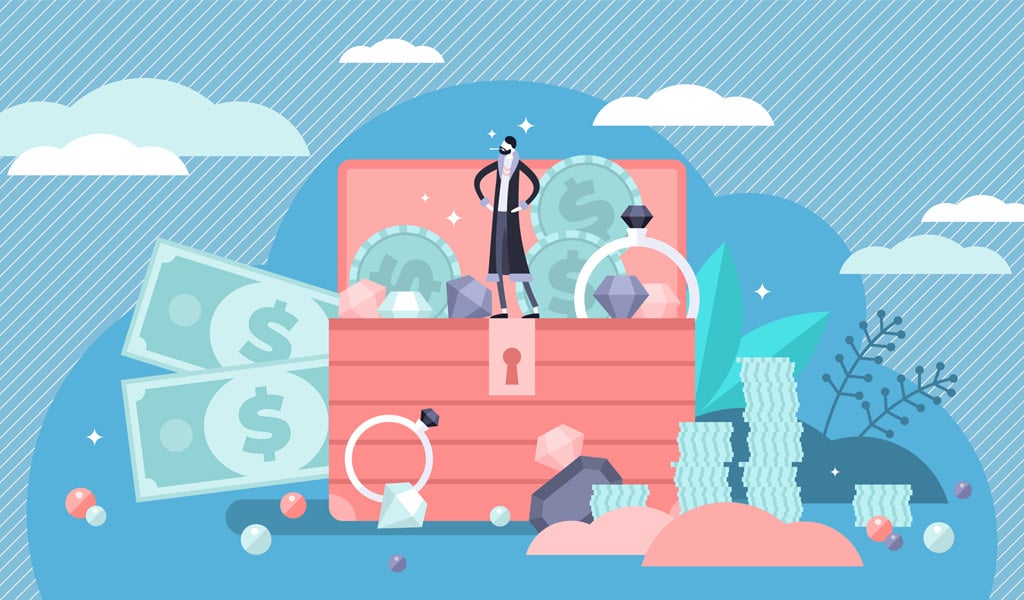
Provide your customers with an excellent experience, and they’ll be more loyal, buy more products, and tell their friends about it. Most companies understand that giving incredible customer experiences is a good thing, but few focuses on how harmful bad experiences are to your brand reputation. Many companies think they have plenty of time to develop a customer experience strategy, but that’s not true. One bad day could turn away a huge chunk of your customers who will never come back. One study found that even when customers love a product, 17% will walk away after just one bad experience.
While there are some long-standing ingredients to creating excellent customer experience strategies, like responding to customer queries quickly or being social, other aspects are always changing. If you want to disrupt your industry and be recognized as a leader in customer experiences, you need to utilize the latest CX strategy advice. That’s what we’re focusing on today.
Who Needs to Focus on Creating Exceptional CX Strategies?
You’re probably expecting us to say that everyone, no matter what industry, needs to focus on customer experience. Well, you’re half right. Customer experience is vital in every industry. It’s just common sense that ignoring, frustrating, or failing to understand your customers will eventually lead to weak sales and poor reviews. However, it’s also true that some industries need to focus on customer experience more than others. Let’s look at the data and see what we can learn.
A study by PWC found that there is a price premium associated with getting customer experience right. For products and services in the service industry, this price premium is much higher. For example, customers are willing to pay 16% more for a coffee with excellent customer experience, or 14% for a hotel stay. On the other end, customers are only willing to pay 7% more for exceptional customer experience when buying a winter coat or car insurance. The study doesn’t speculate on why this is, but it might be to do with the purchase frequency or because consumers see it as a necessity.
You only buy a winter coat once a year or once every 3-4 years, if you get a good one. Similarly, most people will purchase car insurance once a year, and a lot of people don’t shop around for their next policy but will renew the one they are already on. In this scenario, excellent customer service isn’t likely to change the outcome much. The reason people don’t shop around for a new policy isn’t likely to be customer experience unless they’ve had a particularly bad experience. Changing car insurance companies can be complicated and requires a fair amount of effort for the consumer, and most people think it’s not worth the time cost. However, purchase frequency doesn’t explain the full picture.
Consider Apple. Apple products come with a premium price, and people purchase them infrequently. Yet people do pay a premium price for the excellent customer experience they get with Apple. This is where necessity comes in. Although many overworked and overtired office workers would disagree, coffee isn’t a necessity. Buying a coffee from a coffee shop is a luxury – it’s considerably more expensive than making coffee yourself. People are paying for both the convenience and the experience. They want a chat with the barrister or their name on the coffee cup or something beyond the coffee. You can go into a coffee shop every day to get a dose of this experience and brighten your day. It’s a desire-based purchase, not a need-based one. It’s the same with Apple products. You don’t need a MacBook or an iPad; there are alternatives on the market with similar or better specs. But you get excellent customer experience for life. You get consistency.
With a winter coat, you most likely will not talk to that company again until you need a new jacket, and that’s if you want the same brand next time. The impact of excellent customer experience is diminished because you’re only buying the coat out of necessity – you don’t want to freeze when you’re outside, and your alternatives are limited.
Some industries traditionally provide better customer experiences than others. No matter what industry you’re in, you have the potential to disrupt the industry with exceptional customer experiences. Still, if you’re in an industry known to be weak in this area, then your disrupting potential is even higher. So, what are these industries?
- TV and Internet Service Providers – They are at a 6.2% risk of their customers cutting spending due to poor experiences.
- Car Rental companies – 5.3% of customers could leave due to bad experiences.
- Fast Food – 4.8%.
In retail, 42% of customers say they reduced their spending due to bad experiences. The effect goes beyond one customer having a bad experience. One study found 56% of 18 to 37-year-olds said they shared their bad customer experience on social media.

The Most Updated Customer Experience Advice
Lead with Employees, not Technology
Customers bring in revenue, and employees shape experiences. There’s no band-aid for a poor customer experience strategy. You need to align your priorities before you can get started on your customer experience strategy. Simply investing in new technology won’t solve the problem. Technology enables excellent experiences, but it doesn’t create them. What does this mean? Well, you can’t just implement a new omnichannel platform or flashy new chatbots and expect that your customer experience stats will magically go up. These technologies help your employees do their job. They make it easier and more streamlined by removing inefficiencies and pain points, but they don’t make employees better at their job.
Gen Z Are Different, but Not That Different
Have you ever suffered through a movie with teenage characters played by people in their mid-20s and directed by someone in their 50s? Ever thought, “this is not how teenagers are.” This is what a lot of companies look like to Gen Zeds. Here’s what you need to know about how Gen Z are different, but how they are also the same as everyone else:
- Convenience and instant communication are expected. It’s a baseline.
- Like every other generation, better customer experiences (more convenience, more efficiency, warm and friendly employees) mean they spend more.
Know Your Customer Demands
Your customer’s demands aren’t always what you think they are. Today, it’s essential that you use data to your advantage. Please don’t make assumptions about your customers based on what you want or what you think they should want. Instead, talk to them. Conduct surveys, converse with them on social media and always be open for communication.

Providing Exceptional Customer Experience – 6 Tips for Getting Started
1. Focus on the ‘Why’ and Align Your Priorities
Here are the top three reasons why businesses proactively invest in customer experience:
- Improving customer retention (33%)
- Improving cross-selling and up-selling (42%)
- Improving customer satisfaction (32%)
It’s a good idea to analyze your company as it is today based on these three qualities. What is your customer retention rate today? How does it compare to others in your industry? If you want to achieve more cross-selling and upselling, do you have the infrastructure to allow this to happen? This is where your priorities are essential.
Let’s take cross-selling and up-selling. You can implement new technology and train your employees on offering great experiences, but this won’t increase your cross-selling and upselling rate without the infrastructure in place. If you invest in chatbots, then make sure that they are designed to offer additional products when certain things are triggered.
2. Invest in Omni-Channel Services
Multi-channel services have been important for a while now, but they are becoming essential. Customers expect to contact you on your website, live chat, social media, phone, and more. According to Adobe, the companies with the strongest omnichannel customer engagement experience a 10% year-on-year growth, a 10% increase in average order value, and a whopping 25% increase in close rates. Omnichannel is where you should be focusing your efforts if you aren’t already.
3. Create a Customer Experience Vision
You need to create a clear customer experience vision that all employees can understand and get on board with. Your vision should be concise and to the point, for it to be easily understood. For example, Zappos’s online shoe and clothing company embed their core family values into their company culture. These values are delivering ‘wow’ through service, being humble, and embracing change. Figure out what your values are and embed this into your culture. Your employees will start to lead with your vision in mind.
4. Create Emotional Connections
People come back to companies that provide exceptional experiences, but what makes an experience memorable? Emotional connections. Research by the Journal of Consumer Research found that over 50% of an experience is based on emotion. Put simply; customers become loyal if they become emotionally attached to the brand. So how do you get started making emotional connections?
- Being empathetic – Let’s use Zappos again. A customer was late on returning a pair of shoes because her mother passed away. In response, Zappos arranged for a courier to pick up the shoes at no extra cost and received a bouquet of flowers.
- Giving gifts or discounts for birthdays or other special life events.
- Actively listening and building a rapport.
Another study by Harvard Business Review found that emotionally engaged customers are:
- Three times more likely to recommend your product or service.
- Three times more likely to re-purchase.
- Much less likely to shop around.
- Much less price sensitive.
5. Act on Employee Feedback
You should be conducting regular surveys with customers to see how their opinion of your brand evolves. When you get feedback, listen to it, and implement a solution. Spotify has a process where customers can recommend new features. This sounds great on paper, but on social media, Spotify is known for failing to act on these recommendations. Listen to your customers.
6. Measure ROI
If you implement new customer experience strategies, then you must measure the ROI. Measuring ROI will tell you where your actions have the most impact. If you find that your chatbot results in a high ROI, but updating your email form doesn’t, then you know that your customers value instant communication more than simply having endless options. Knowing this can help inform your next actions and allow you to supercharge your strategies.